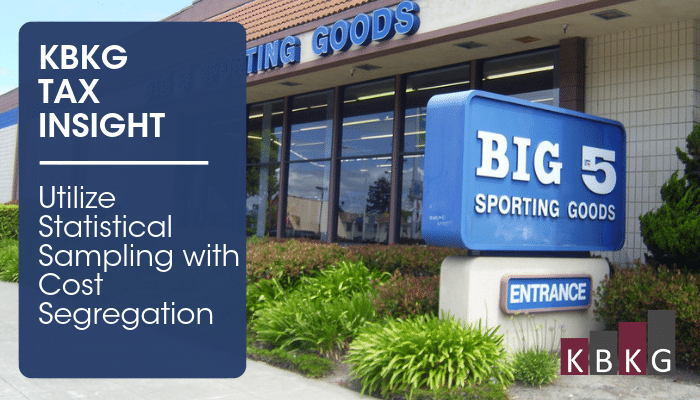If you are a taxpayer that owns multiple building improvement properties which are similar in construction, utilizing a statistical sampling along with cost segregation can greatly reduce the fees and resources needed to allocate each property for tax depreciation. Pairing this with an accounting method change to claim missed cost segregation opportunities over multiple years can drive significant tax benefits.
KBKG Insight: Large retail, restaurant, hotel chain operators, and even real estate portfolio owners have employed these techniques for many years by hiring a 3rd party consultant who follows IRS Statistical Sampling guidelines. Applying this methodology provides you with certainty the IRS will accept your Statistical Sampling results.
Background
In 2011, the IRS released detailed procedures (Rev Proc 2011-42) that taxpayers may follow to utilize statistical sampling. The methodology outlined in Revenue Procedure 2011-42 allows a taxpayer to analyze a small, random number of items from a large population and apply the results of the analysis to the entire population. When determining a sample population, one must look at the homogeneous nature of the assets to be sampled. For example, in a population of 100 stand-alone restaurant chain buildings, we would expect very similar allocation of 1245 personal property and 1250 real property making this a prime candidate for sampling. However, a population consisting of 20 industrial buildings, 15 apartment complexes, 22 office buildings, and 70 single family homes would not work as there would be vastly different allocations between the different types of property.
KBKG Insight: Some other popular applications of statistical sampling include Research and Development Credit, Repairs vs. Capitalization, and IRC Section 199 manufacturing deduction analyses.
Case Study
KBKG recently conducted a statistical sampling for a single-family rental investor. The population of locations analyzed consisted of 585 owned locations with approximately $40M of cost basis placed into service over the past 10 years. KBKG developed a statistical sample model that included a detailed engineering-based analysis and inspection of only 48 locations. Those results were extrapolated utilizing the procedures outlined within Rev. Proc. 2011-42 and IRS Forms 3115 were filed.
The result: KBKG was able to reclassify nearly $8M of total basis into shorter categories. The client was able to claim over $5 million of additional tax deductions in the first year while minimizing the professional fees and time incurred by their internal staff.
Statistical Sampling with Cost Segregation is a beneficial tax strategy when applied with the help of a 3rd party consultant who follows the IRS guidelines. To find out if statistical sampling will benefit you or your clients, contact us today.
Author: Lester Cook, CCSP
Download Article: KBKG Tax Insight: Utilize Statistical Sampling with Cost Segregation


